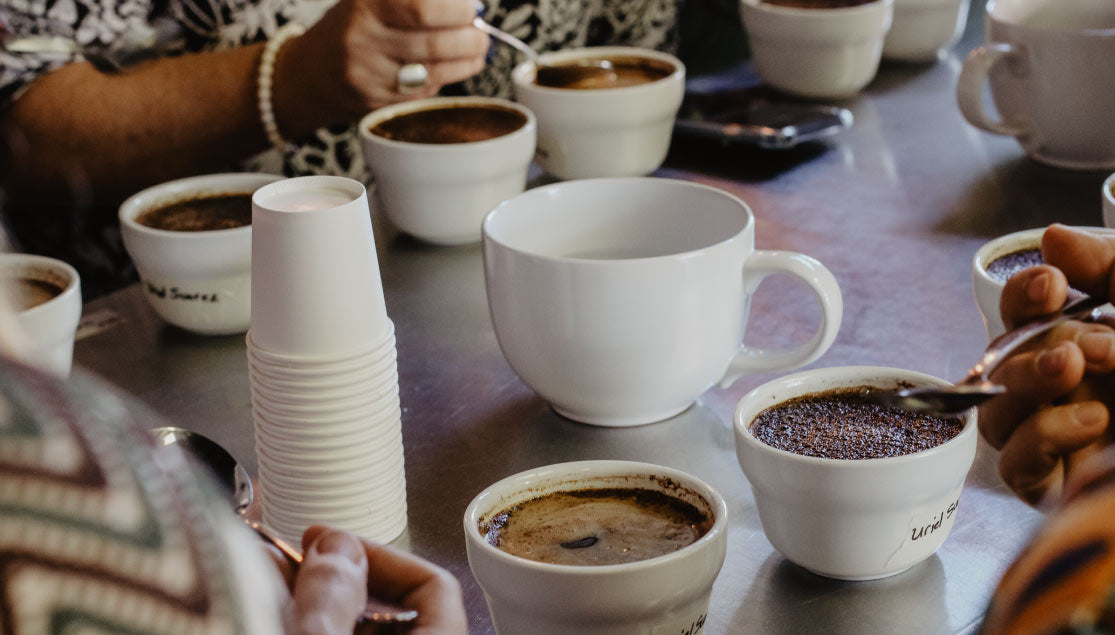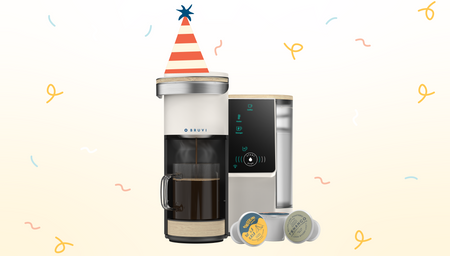So You Want to Be a Coffee Taster?
Elderflower liqueur, macintosh apple skin, Hawaiian (and only Hawaiian) macadamia nuts, my friend’s aunt’s brownie sundae I had when I was eight. Coffee tasting notes can get out of hand and might leave you wondering, how did they taste that? The good news is that your taste buds aren’t defective. With a little practice, you too can baffle your friends with the depth of aromatic notes found in specialty coffees.
First Steps
The first step is easy - just drink coffee every day. Exposure to the default coffee flavor is essential. Once your brain gets used to tasting just “coffee”, it will start to tune that flavor out and leave in all of the flavors and aromas unique to that specific coffee. It’s like listening to your friends in a loud restaurant; the crowd noise and background music fades out so you can focus on your conversation. For this process to work, you need friends that can make good conversation and they shouldn’t talk with their mouth full. In other words, you need to drink coffee which actually has unique flavors and aromas, and you shouldn’t add anything to it which would obscure those flavors (like milk and sugar).
Coffee Tasting with a Purpose
Once you’re accustomed to the flavor of coffee, you can start really diving into your cups and thinking hard about what they taste like. I call this tasting intentionally. Before you even taste your coffee, start by smelling it. Most of the notes we experience are actually aromas picked up by our olfactory system (i.e., your nose). The best coffees all have unmistakable aromas which I can smell as soon as I grind them, even before brewing. Next, start tasting your coffee while it’s hot. But don’t stop there - keep tasting until it’s room temperature. You will be surprised how much your experience changes as it cools. Think about specific flavors you taste, but also think about what the coffee feels like. Is the texture silky? Closer to skim milk, or cream? Does the acidity remind you of an apple or of citrus? Finally, what flavors linger even after you’ve savored the last sip from the mug? Considering all of these points is like doing flavor workouts for your tongue and brain. Even if your conclusion is just “it tastes like coffee”, you’re getting better every time you go through this exercise.
Eat Your Homework

However, coffee rarely tastes only of “coffee”. There is an incredible range of flavors you can experience and your palette training doesn’t stop when you’re done drinking coffee. Every time you eat or drink, try to commit the tasting experience to memory. How does this strawberry compare to those you had before? Can you pick out the flavor of almonds versus walnuts in the bag of mixed nuts? Being an active coffee taster all of the time will build your “flavor recall”. Having a strong flavor recall and a large sensory library will be the difference between noticing a coffee is fruity, and knowing that it tastes like peak-season Rainier cherries. Look at the flavor notes on the bag (or the pod) and compare them to the real thing. You probably have some limes, raspberries, or apricots around the house. Once you get more confident, you can look at the coffee taster’s wheel and see what else you can find in the cup.
Coffee Tasting Exercises

Now back to just tasting coffee. One of my favorite ways to learn more about a coffee is to compare it to another coffee, like an A/B test. Brew (or cup) two to four different coffees at the same time. Rank them according to which is most acidic, which is the sweetest, which is the nuttiest, and so on. Soon enough you won’t need other coffees to compare to - you’ll just know that this coffee is especially fruity or has an unusually creamy texture. But you’ll still want to do these tasting exercises because they’re a lot of fun!
Coffee Tasting With Friends
You can supercharge the educational value (and the fun factor) by doing all of these tests with friends. Invite them over for a cupping party and you will benefit from each other's unique palates. I love fresh fruit so I’m the first to call out a juicy, peachy coffee. Yet when I taste coffee with my trail-mix-loving sister, I get a litany of nut notes down to origin (“those are Sicilian pistachios, John”) and preparation (roasted, blanched, or raw?). If your friends aren’t interested or you think they wouldn’t recognize notes of honeysuckle if they hit them in the face: find a public coffee tasting and learn from the experts hosting it. Ask a barista at a local specialty coffee shop, usually they are free!
Congratulations, You Have a New Hobby!
Ultimately, building a coffee palate is a lifelong journey and I’m still adding new notes to my arsenal and learning new ways of thinking about coffee. Improving your palette will help you appreciate higher quality coffees - perhaps you’ll begin to see why someone might spend $100 on a cup of coffee. But be warned! You might start noticing all the bad coffee out there too. Remember to enjoy the process - it’s a hobby not homework - and sometimes coffee really does just taste like coffee.





